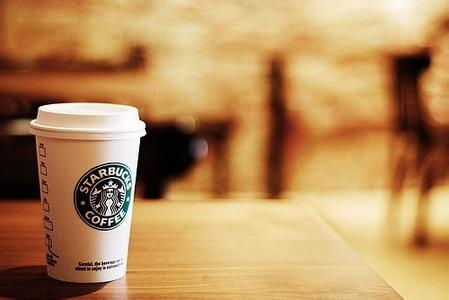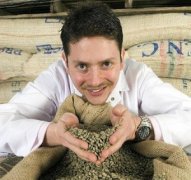8 yuan coffee war
Schultz also wrote in an internal memo in February 2007: "the store has lost its past soul and can no longer reflect the advantage of a chain store over a warm community store."

Liu Xiping's complaint is, why is Starbucks so expensive in China? "I bought a medium cup of special coffee in Cincinnati, USA. The price is 3.35 US dollars, plus tax, up to 78 percent, equivalent to a total price of about 24 yuan. But it costs 29-30 yuan to buy a medium cup of milk in China, which is too expensive. With the appreciation of the RMB in recent years, how come Starbucks has not adjusted its price? "
The emergence of $1 "VIA non-brewing instant coffee" is precisely regarded by the Starbucks Party as irrefutable evidence of Starbucks' spiritual decline.
Li Jing, a spokesman for Starbucks China, explained that it is necessary to sell "VIA non-brewing instant coffee" because "the huge global market for instant coffee is a good opportunity for us to miss. With the gradual increase of mobility in modern society, consumers' demand for brewed-free coffee with easy to carry and excellent flavor is unprecedented."
One of the rumors of Starbucks' localization in China is that "Starbucks wants to sell Fish Filets in Hot Chili Oil," Lijing explains, "We don't sell Fish Filets in Hot Chili Oil!" The localization of Starbucks is manifested in the introduction of moon cakes, star ice dumplings, tofu vegetable rolls and mango chicken rolls in the food category, and matcha cappuccino and tea lattes in the beverage category, as well as products that integrate Chinese elements, such as Chinese zodiac savings cans and zodiac mugs launched during the Spring Festival, as well as stores that integrate local architectural features, such as Shanghai Yuyuan Shop, Beijing Tianhe Square, Chengdu Jinli Dian, wide and narrow Lane Shop, and so on.
In her market research, Lan Jianxia found that eight of the 10 customers who entered Starbucks were carrying laptops, and each of them spent an average of two hours inside. However, Starbucks did not make good use of this time to increase secondary consumption. "A cup of coffee is finished in 15 to 20 minutes. If you get up to order again, there is an open computer on the table and a bag under your feet, which is very inconvenient." The shop assistant's face is stiff. If you ask something, you will feel that you are very disturbing. "
For Starbucks, the bigger challenge may not come from McDonald's or KFC, but from Britain's Costa, Japan's DOUTOR and Taiwan's 85C and Shangdao Coffee. 85C, which entered Shanghai in 2007, created the concept of "affordable coffee" at the lowest price of 8 yuan, and as a result, 65% of gross profit was driven by 55% of gross profit. The first store in Shanghai once set a record of 1.8 million yuan in monthly turnover. Wang Jianyao on the mainland of 85C said that by the end of this year, the total number of stores in the mainland of 85C will reach 91.
The continuous decline in profits is Starbucks' biggest worry. Schultz has put forward a series of strategic plans to enhance the customer experience, including the launch of a new generation of espresso machines, more value-added discounts for cardholders, the launch of the first online community MyStarbucksIdea, and the expansion of cooperation with international organizations. No one knows whether the future can really, as Schultz said, "respond forcefully to all doubts, and we want everyone to believe that. The legend of Starbucks will last forever. "
Important Notice :
前街咖啡 FrontStreet Coffee has moved to new addredd:
FrontStreet Coffee Address: 315,Donghua East Road,GuangZhou
Tel:020 38364473
- Prev

Coffee sharpens the mind
Most caffeine addicts will tell you that coffee sharpens the mind. It turns out that feeding rodents a dose of caffeine does strengthen brain cell connections in an underunderstood part of the brain, scientists report on the website of the journal Nature Neurology.
- Next

Coffee tasters buy a $14 million insurance policy to protect their tongues.
Belicia, the chief connoisseur of Kashijia Coffee, the UK's largest coffee chain, has a natural sensitivity to coffee and is responsible for about 180m cups of coffee sold each year, so the company insured its tongue for $14 million.
Related
- What is the standard process for the purpose of coffee cup testing? What is the difference between hand-brewed coffee and cup testing?
- How to use hand-brewed coffee paragon small golden balls? How does cold coffee lock in the aroma of coffee?
- Is American coffee black? What is the difference between American coffee and drip coffee?
- Unexpected! Well-known tea beverage brand Lele Tea will withdraw from the Zhengzhou market!
- Starbucks enters the fashion and beauty industry?! Netizen: Give me an ice American eye cream
- Why can American refills for free? The difference between Americano and American drip pot coffee
- Being chased out of the rain in front of Starbucks?! Store: Sheltering from rain under umbrellas poses a safety hazard
- The white moonlight has changed?! Lucky launches "Big Winter Pear American"
- Hand-brewed coffee three-stage method, high-sweet and universal brewing method to share! What does the high sweet water level of hand-brewed coffee mean?
- What is the difference between raw, refined and full espresso coffee? How to extract espresso and taste good?

